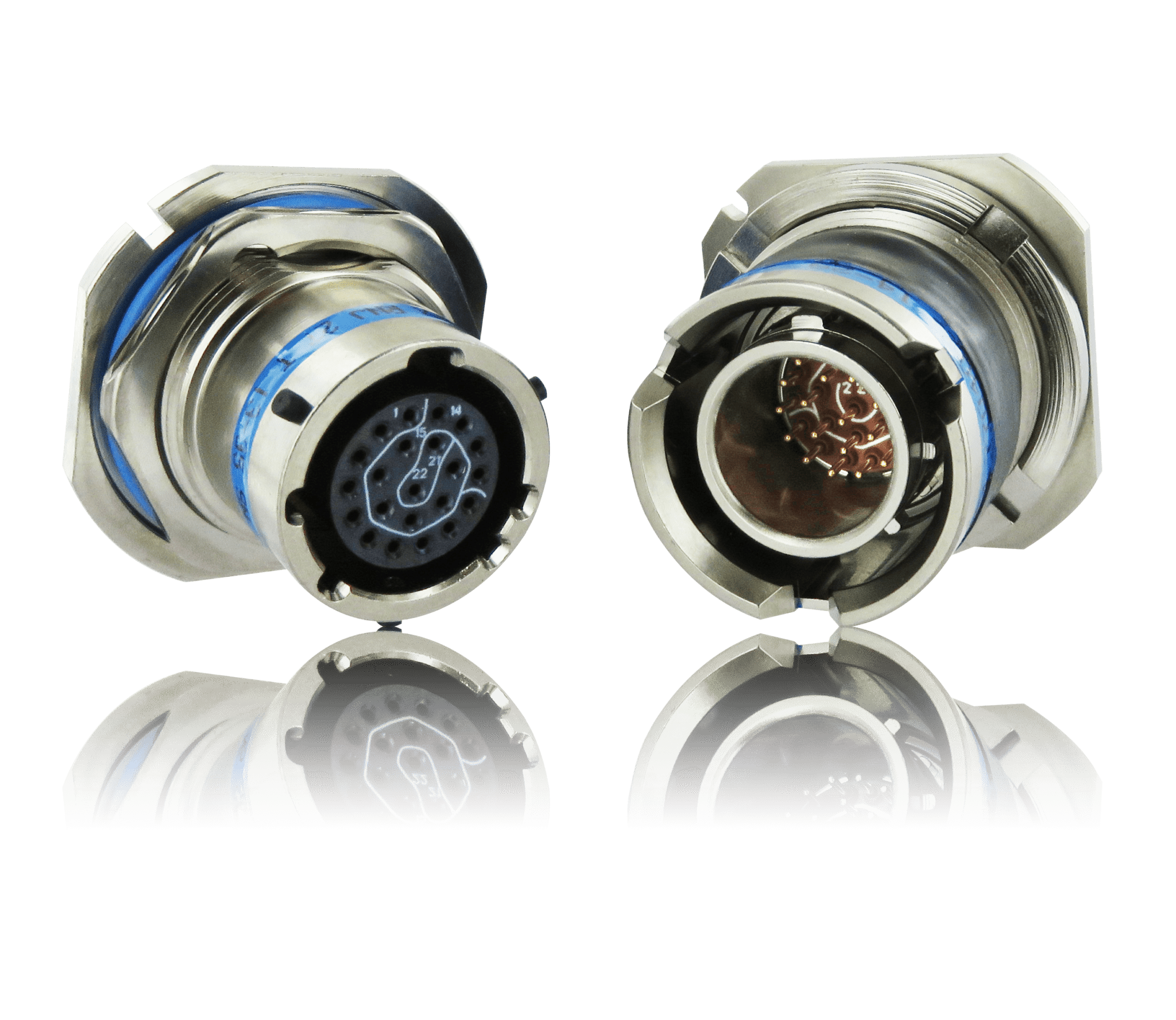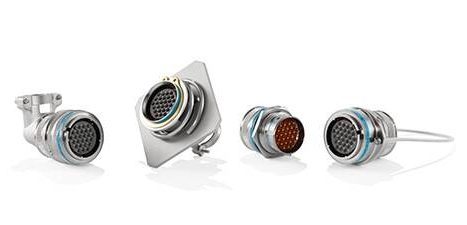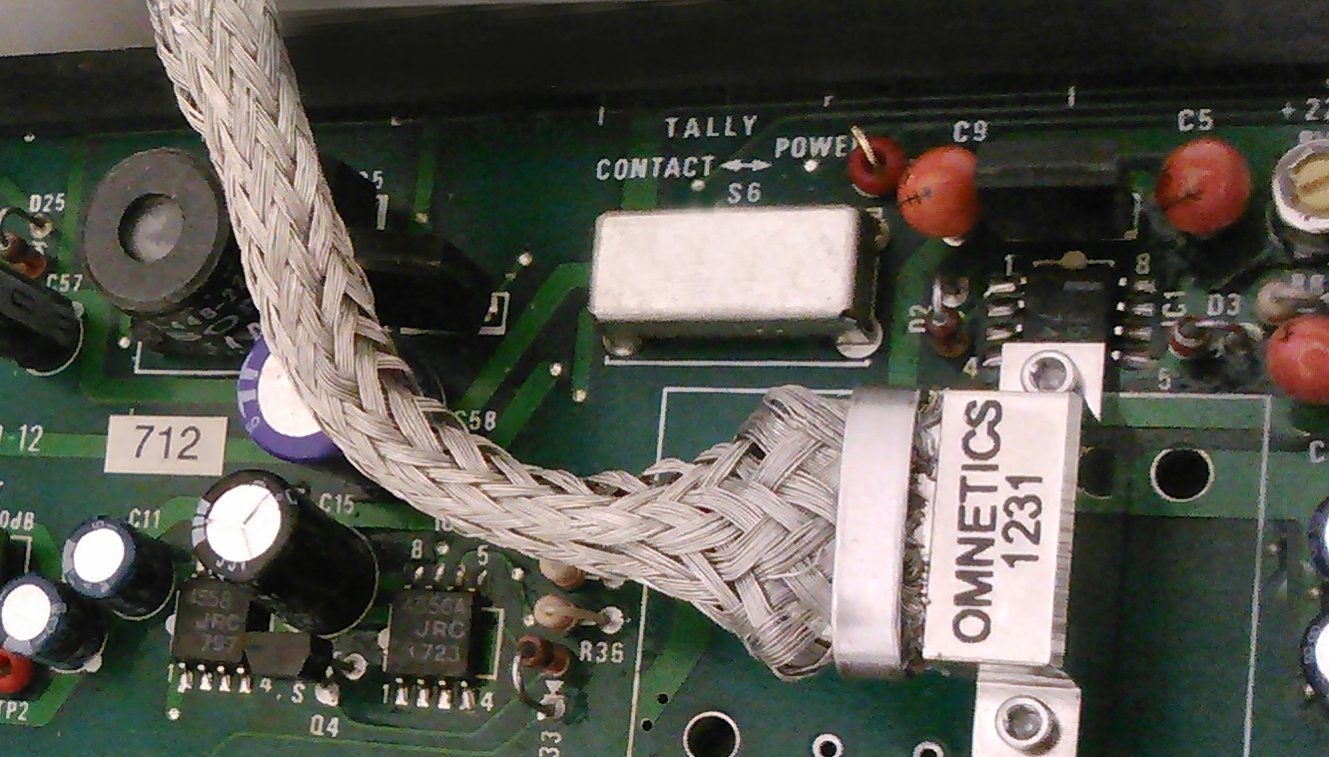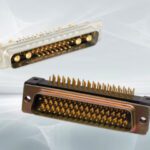Connectors in Space
The space market is booming and connector suppliers are finding more and more opportunities to be a part of it. However, strict regulations and extreme environmental conditions add to the challenges suppliers face as they launch their space-grade connectors into what is quickly becoming a growth industry.

Because of the high cost of deployment and the difficulty of serviceability, everything that goes into space, from the people to the tiniest components, must meet stringent requirements. Connectors used in rockets and satellites must be tested and approved by the appropriate space agency for the country from which they are deployed. They must withstand the rigors of traveling at high speed, which includes shock and vibration, while they are subjected to extreme temperatures, radiation, static, and electromagnetic interference (EMI). And they must reliably perform some very specific functions.
Military standards make the perfect starting point
Products from connector suppliers that already meet military standards are a good fit for rockets because they are readily adaptable to the harsh environments rockets encounter. One example is Amphenol Pcd’s RNJ series, a blind mate 38999 pin and socket connector used for data transfer to the rocket. “The RNJ is very rugged, based on the design of a MIL-DTL-38999 military connector,” said Matt O’Leary, field application engineer. “Customers in this market have a need for blind mate connectors and this is a perfect solution for these applications. They can transfer both data or power and are widely used in this market. There are not many connectors that are blind mate that can also handle the environments that this connector can.”

Amphenol Socapex RNJ series, available from Amphenol Pcd.
Still, supplying connectors for space has its own challenges. Because of the high degree of confidentiality, suppliers typically get only the basic information about what is needed. “Generally speaking, we get the information that we have to have: the application area, the environment that the product will be in, and the connector and cabling that they’re using. When it comes to designing in, we get only the high level application details such as what area it will be in, what the cabling diameter is, what program it’s involved with,” said Edan MacFarlane, a senior product specialist who manages the backshell and dust cap line at Amphenol Pcd.
For security reasons, space agencies are extremely strict about sourcing materials and equipment. Each space agency has its own standards for materials and construction, as well as the requirements regarding who has access to the materials all the way to the finished product. This often means suppliers must create part numbers that are unique to a particular agency and customer. “Customers will want the military standard, but they would want a proprietary part number, which is on the design,” MacFarlane said. “So even though it may be a MIL-spec, such as our M 85049 backshell, and it meets the standard, that may not be reflected like a military standard part number.”
Balancing SWaP and Reliability
While size, weight, and power (SWaP) have become important criteria in many applications, they are especially critical for space missions. The cost to launch one pound of payload into Earth orbit is many thousands of dollars. Because small size and light weight cannot come at the expense of reliability, durability, and safety – all under extreme conditions – careful trade-offs must be made.
Reliability encompasses many factors. Connectivity components in rockets operate in extreme heat and extreme cold. As the rocket gains altitude, it gets closer to the sun which raises the temperature. The connectors must, therefore, be resistant to thermal shock from temperature changes and pyroshock, or pyrotechnic shock, which results from an explosion such as the one created by the numerous engines firing to launch the rocket.
“You also deal with things like outgassing. You don’t want to create this outgassing fog. A lot of what we put in space is for surveillance, for weather, or other types of intelligence,” said Matt McAlonis, technical fellow and global leader of engineering at TE Connectivity. In addition to outgassing from plastic and composite materials, rocket launches often take place near the ocean where there is a heavy salt fog environment that can cause galvanic corrosion of metallic systems. “All these things could affect the signal integrity or the power or whatever you’re running through the connector. And then it has to decouple reliably. The same is true for the satellites and other devices that need to get dropped or deployed.”

TE Connectivity’s DEUTSCH DBAS series push-pull connectors are designed for severe environmental areas in aeronautic, military, and space applications such as rocket launch pads.
Launching rockets requires huge amounts of fuel so preventing explosions is another concern. Non-sparking connectors are used near the fuel cells and anywhere there can potentially be an explosion.

Amphenol Socapex RJF TV Ethernet connectors are non-sparking solutions for ATEX Zone 2.
Plating and shielding
Plating with materials that don’t corrode is another way of ensuring the reliability of connectors. “With our space customers we use mostly nickel and durmalon plating. Both are very resistant materials that won’t corrode and will keep the connector safe,” said O’Leary.
EMI shielding prevents the signals going through the various wires from interfering with each other. Shielded backshells provide complete EMI protection from the wires all the way through the connector and are used when necessary to keep the signals from degrading.
Sensors
Sensors provide the crucial information used to determine if, among other things, a mission needs to change trajectory or be aborted. Sensors are used to track motion, inertia, shock, vibration, and temperature and then transmit that data through a cable system to a computer where it is recorded, computed, and communicated to decision makers, McAlonis explained. “Every piece of the ecosystem needs to have ideally equivalent liability and ratings. So if the sensor has a certain rating the connector typically has to be rated the same if it is in the same exact environment.”
Miniature connectors for positioning
The sections of the rocket (3 and above) that focus on guidance, navigation, and control (GN-C) use a lot of electrical circuits that include connectors. Miniature connectors have a unique niche in this arena, particularly micro-D and nano-D connectors, when it comes to positioning the launch vehicles and the satellites they deploy. These connectors meet all the standards for ruggedness, size, weight, and secure-locking. Electrical factors include a focus on the signals they carry, such as receiving microwave and analog control data and digital pulses to change direction with steering mechanisms. High-reliability interconnects are used to send position and navigation data to other components within the satellite and back home to the control center.

This micro-D connector features a mixed signal cable that can be used in a star tracker to provide power and signal.
Star trackers are used to first drive and position the launch vehicle and then to precisely position the satellites. The trackers use one reference point on Earth and a second reference point chosen from a database of over 23,000 stars. The satellites are located and positioned to maximize the quality and value of the high-resolution images they collect and measure. A tracker from Blue Canyon Technologies, for example, provides precision attitude position in a package that weighs only 500 grams and can detect stars to a 7.0 magnitude to help set orbits at specific altitudes. Space-grade cables that provide both power and signal are popular for use in star trackers because they save size and weight.
With multiple space agencies and commercial entities launching satellites and preparing for travel to Mars, the stakes and the competition continue to get higher and space has become a viable market for the connector industry.
Subscribe to our weekly e-newsletters, follow us on LinkedIn, Twitter, and Facebook, and check out our eBook archives for more applicable, expert-informed connectivity content.
Like this article? Check out our other High-Reliability, and Harsh Environment articles, our Military & Aerospace Market Page, and our 2021 Article Archives.
- Sealing Success: Overmolding for More Secure Connections - April 23, 2024
- Medical Cable Assemblies Product Roundup - April 23, 2024
- Mezzanine Connectors Product Roundup - April 16, 2024





